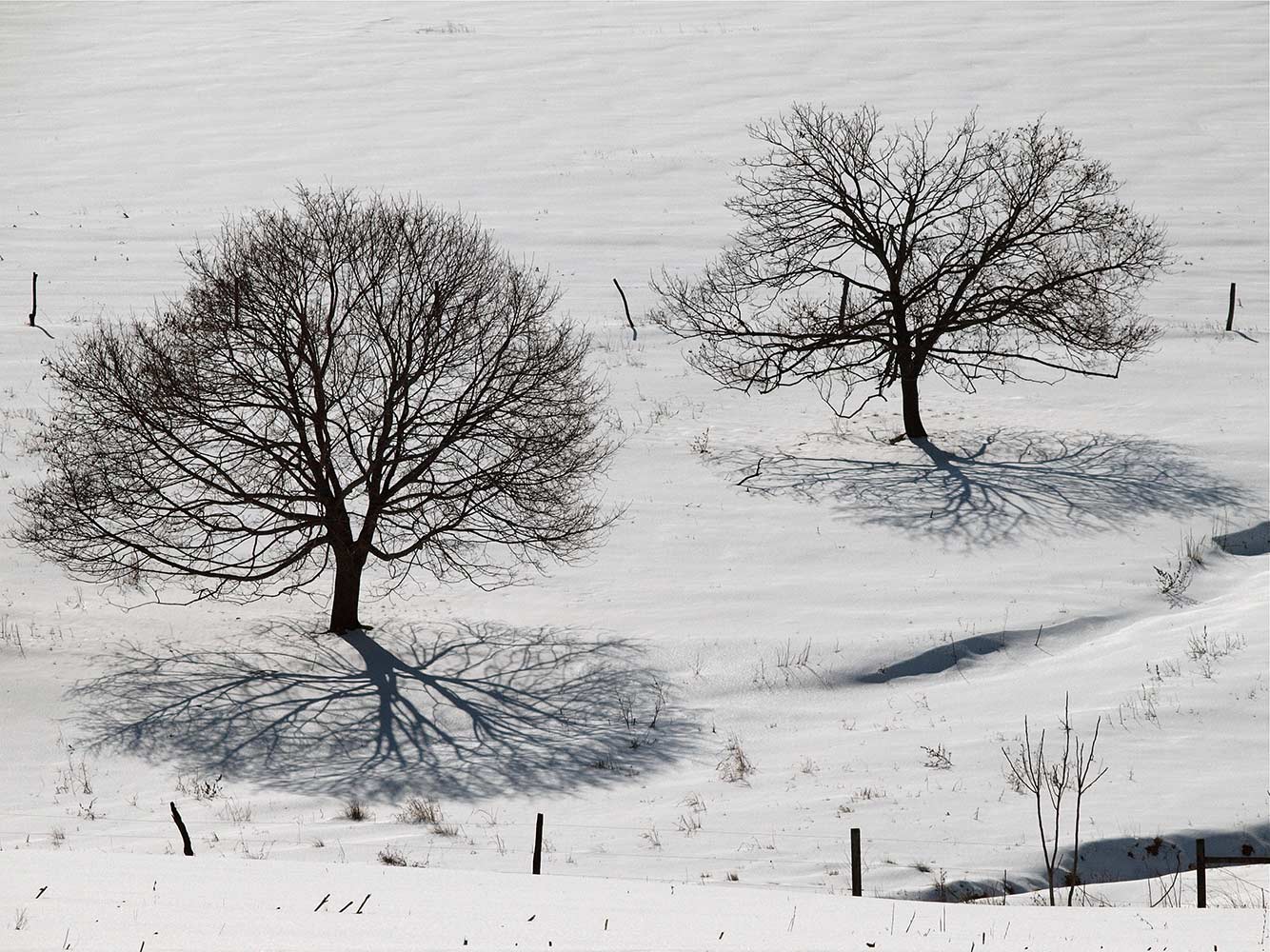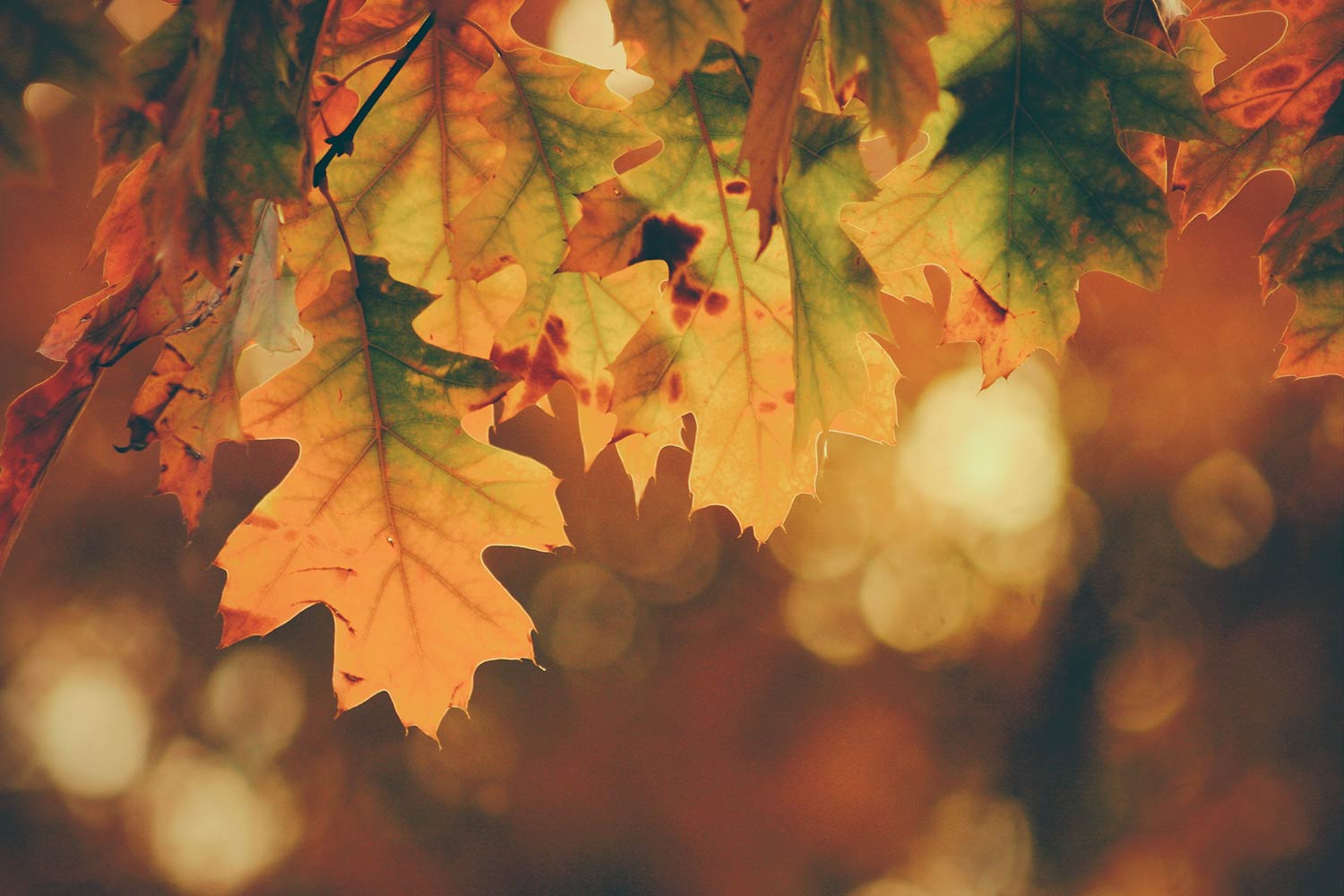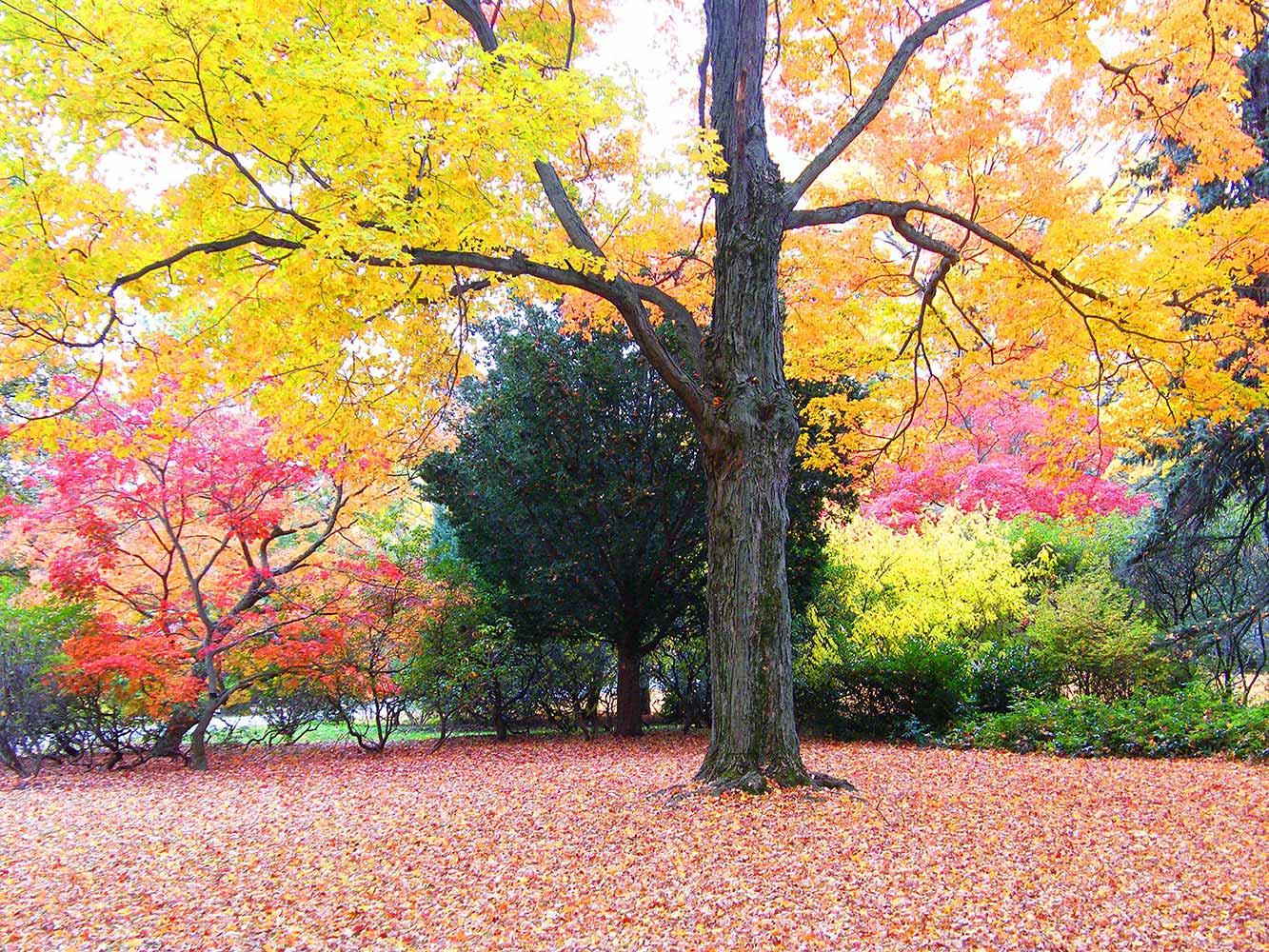Autumn leaves
The days are getting shorter, the long warm summer evenings are pretty much done. A chill has crept into the early morning and we’re pulling on an extra blanket at night. Yup, here in the southern hemisphere, it’s autumn. And the trees (the deciduous ones, anyway!) know it, too. Although here in Australia our natural landscape is dominated by evergreen eucalypts, part of the legacy of European settlement, particularly in urban environments, is gardens and streets lined with deciduous trees native to the northern hemisphere.
As the days get shorter, the reduced amount of light signals that a change in season is well and truly on the way. It’s time for deciduous trees to prepare for the harsh conditions of winter. The shorter days mean there's less sunlight trees need to drive photosynthesis, which the trees rely on for energy. Outside of the tropics, it also means cold—in many parts of the world, winter brings with it snow and ice.

Evergreen trees, like eucalypts and most conifers, have tough waxy leaves that can withstand the harsh conditions of winter. But it’s hard for broadleaf trees to keep their leaves healthy in these conditions, so many species don’t even try. They extract as many nutrients—mainly phosphorous and nitrogen—as possible from the leaves, to be stored in the woody parts of the tree and see them through the winter, and then cut their losses—literally.
The leaves change colour, eventually turning brown and dry, then fall to the ground. The part of the branch where the leaves were connected is sealed off by the growth of specialised cells. However, not all deciduous trees actually lose their leaves—some species of oak hang on to their dead, brown leaves until the growth of new foliage in spring. Some trees that lose their leaves in cold conditions at higher latitudes keep their leaves—and their green colour—when growing in milder climates.
So what causes the beautiful displays of autumnal colour? The green colour of spring and summer leaves is the result of chlorophyll, the chemical that enables the plant to photosynthesise and produce the energy it needs to grow. Come autumn, the tree starts to break down the chlorophyll and stores the broken-down molecules to have on hand when spring comes, making that first effort of chlorophyll production easier. This means that the green pigment that chlorophyll provides to the leaf is no longer dominant. Other colours—yellow, orange, red, purple—start to show through.

The red and purple colour are produced by a chemical called anthocyanin. This chemical can also help protect leaves from becoming sun burnt or being eaten by insects. Some trees have anthocyanin in their leaves throughout the year, but many only produce this chemical in the autumn. It reacts with glucose (sugar) held within the leaves to produce the red and purple pigments. Maple leaves are particularly renowned for their beautiful autumn colours—this is because their leaves contain a lot of glucose, which ups the production of anthocyanin.
The yellows and oranges are caused by varying amounts of chemical called carotenoids (also responsible for making carrots orange!). Browns are generally caused by tannins.

The grandeur of autumn colour can vary from year to year depending on weather conditions. More rainfall and increased soil moisture makes for more intense displays of colour. Sunny days also help, as anthocyanin production is helped along by sunlight.
So, the gorgeous displays of colour deciduous trees put on for us aren’t solely to help ease us through that transition from the warm summer nights into the chill frosty mornings of winter—they’re the result of a complex evolutionary strategy to save energy and conserve nutrients, essential to the trees’ growth and survival.





